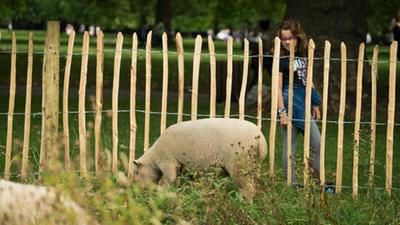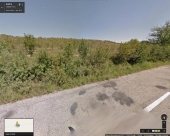
 7
7





 6
6




How Permies works: https://permies.com/wiki/34193/permies-works-links-threads
My projects on Skye: The tree field, Growing and landracing, perennial polycultures, "Don't dream it - be it! "
 3
3




Nancy Reading wrote:Hi John, No one has a right to judge you based on what you use. We know that plastic is not an ideal solution, but sometimes it is the least worst that will do the job. I use plastic on my polytunnel. I have used it in groundcover mulches (and regretted it later). Maybe you can use these temporarily this season and come up with a better solution for the long term. My view of plastic is that it does degrade and once it starts to crumble you end up with a mess.
I'm sure we've had threads on this sort of issue before...
 5
5




Nancy Reading wrote:Hi John, No one has a right to judge you based on what you use. We know that plastic is not an ideal solution, but sometimes it is the least worst that will do the job. I use plastic on my polytunnel. I have used it in groundcover mulches (and regretted it later). Maybe you can use these temporarily this season and come up with a better solution for the long term. My view of plastic is that it does degrade and once it starts to crumble you end up with a mess.
I'm sure we've had threads on this sort of issue before...
Moderator, Treatment Free Beekeepers group on Facebook.
https://www.facebook.com/groups/treatmentfreebeekeepers/





 3
3




 6
6




No man is an island.
 5
5




Tim Siemens wrote:What about wood matt. In northern Canada we use something called rig mats which are matts made out of 3 inch lumber bolted together. The matt is usually three layers thick. They are used in industrial sites so stand up to large truck traffic.
 6
6




Invasive plants are Earth's way of insisting we notice her medicines. Stephen Herrod Buhner
Everyone learns what works by learning what doesn't work. Stephen Herrod Buhner
 5
5




Douglas Alpenstock wrote:
My concern with these tiles is that weeds and turf will grow up through the holes. This would be a devil of a thing to control. Eventually they will envelop the tiles and they will be difficult to remove.
 6
6




Anne Miller wrote:What about having a load of wood chips brought in.
It seem like over time more wood chips could be added until the track is completed.
Here in the US, the pioneers made roads out of logs.
I did not know these roads had a name until someone posted about them to the forum.
Corduroy roads, I couldn't thread though I know there is one.
Creating a nature reserve and food forest in Somerset, UK (Zone 9a).












 7
7





How Permies works: https://permies.com/wiki/34193/permies-works-links-threads
My projects on Skye: The tree field, Growing and landracing, perennial polycultures, "Don't dream it - be it! "
 4
4




I was told conversely that even if using compacted gravel this actually damages the soil due to the runoff and/or the engineering work involved or something so is it just a case of picking the lesser evil?
John Daley Bendigo, Australia The Enemy of progress is the hope of a perfect plan
Benefits of rainfall collection https://permies.com/t/88043/benefits-rainfall-collection
GOOD DEBT/ BAD DEBT https://permies.com/t/179218/mortgages-good-debt-bad-debt
 2
2




Chris D'Agorne wrote:
I have the same issue as the OP, also in the UK. I considered woodchip, but my concern is that when it breaks down, it leaves bare earth, which has even less structural strength than the turf which is currently there. At the moment I just don’t use the track in winter and walk in, instead, which is a massive pain when carrying heavy loads.
Invasive plants are Earth's way of insisting we notice her medicines. Stephen Herrod Buhner
Everyone learns what works by learning what doesn't work. Stephen Herrod Buhner
 6
6




John Daley Bendigo, Australia The Enemy of progress is the hope of a perfect plan
Benefits of rainfall collection https://permies.com/t/88043/benefits-rainfall-collection
GOOD DEBT/ BAD DEBT https://permies.com/t/179218/mortgages-good-debt-bad-debt
 5
5




"You must be the change you want to see in the world." "First they ignore you, then they laugh at you, then they fight you, then you win." --Mahatma Gandhi
"Preach the Gospel always, and if necessary, use words." --Francis of Assisi.
"Family farms work when the whole family works the farm." -- Adam Klaus

 5
5




 2
2




Chris D'Agorne wrote:...
 3
3




Nancy Reading wrote:So assuming you really do need vehicle access over the field and can't rearrange things to make this unecessary (It always seems a pity to lose potential growing space) I did find a couple of threads that may trigger some thoughts. It obviously depends on how often you want to drive on the surface and how heavy the vehicle is going to be.
First: The living road This idea was to make a roadway with tree trunks that might carry on growing (therefore not rotting) providing an everlasting green roadway that would blend into the swamp. I've certainly had alder carry on growing just laid on turf (annoying when you want them to firewood!) and willow certainly will. I don't know that anyone had actually tried this and there were a few concerns, but a nice thought experiment...
This one has more detail on corduroy roads, which do sound possible if you have access to timber. I'm not sure what the going rate is near you, but I think you could get a double lorry load of logs for £500 or so (plus delivery)
A thread about geocells which sounds like what you are proposing. They are available is various materials and also can be filled with a variety of materials.
I wondered whether a lightweight fence like this might be used as a surfacing material for spreading the loads like a corduroy road but less substantial?

Then I found this! Making corduroy roads of various strengths and about 10:30 minutes in they make a slightly more substantial version of the fencing as a portable military road, and a little later smaller sections laid just for the vehicle wheel tread areas. I'm thinking that they could even be rolled up after use to keep dry so last longer.
 3
3




John C Daley wrote:I suggest what authority or experience the person who told you this?
I was told conversely that even if using compacted gravel this actually damages the soil due to the runoff and/or the engineering work involved or something so is it just a case of picking the lesser evil?
John, I can tell you that 250 years of Civil Engineering will show that statement to be incorrect.
Properly designed works will prevent runoff damage.
The use of degradable material is a waste in reality.
Corduroy roads with trees is a lot of work as well.
Those plastic square look good, I have seen them elsewhere, but I suggest you visit a few places that have used them.
I have a few questions?
- Why is planning approval needed for an access road?
- how long is this track going to be?

 5
5




Some places need to be wild
 2
2




John Daley Bendigo, Australia The Enemy of progress is the hope of a perfect plan
Benefits of rainfall collection https://permies.com/t/88043/benefits-rainfall-collection
GOOD DEBT/ BAD DEBT https://permies.com/t/179218/mortgages-good-debt-bad-debt
 2
2




Moderator, Treatment Free Beekeepers group on Facebook.
https://www.facebook.com/groups/treatmentfreebeekeepers/






|
You are HERE! The other map is obviously wrong. Better confirm with this tiny ad:
Support permies and give beautiful gifts to gardeners: permaculture playing cards.
https://gardener-gift.com/
|






